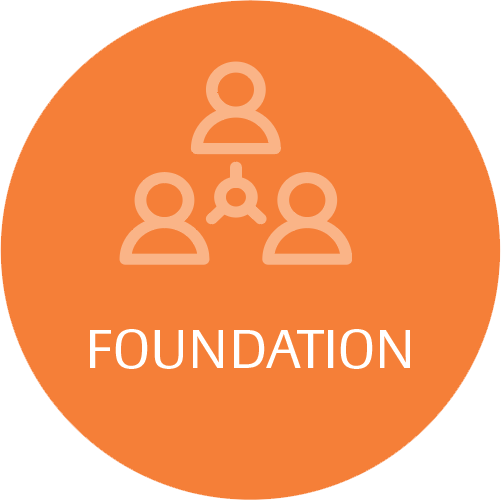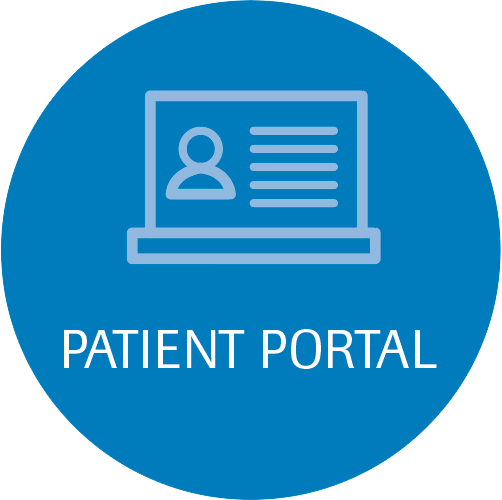What is a CT of the Chest and what does it do?
A CT Chest is an examination that takes very thin slice pictures (5mm) of the chest cavity. The images start just above the shoulders and end at the top of your kidneys. The areas included in the study are the heart, lungs and great vessels, as well as portions of the thyroid, liver, esophagus and stomach.
A CT PE (Pulmonary Embolus) Study is a CT exam of the chest that uses a combination of high speed CT imaging and an Iodine contrast to make very thin (1.5mm) and very detailed pictures of the pulmonary artery and vein. This is done in order to determine if any clots (pulmonary emboli) are present in these lung vessels and is a valuable tool in the diagnosis and subsequent treatment of this condition.
Doctors use chest CT scans to:
- Show the size, shape, and position of your lungs and other structures in your chest.
- Follow up on abnormal findings from standard chest x rays.
- Find the cause of lung symptoms, such as shortness of breath or chest pain.
- Find out whether you have a lung problem, such as a tumor, excess fluid around the lungs, or a pulmonary embolism (a blood clot in the lungs). The test also is used to check for other conditions, such as tuberculosis (tu-ber-kyu-LO-sis), emphysema (em-fi-SE-ma), and pneumonia (nu-MO-ne-ah).
Who performs the test?
The exam itself is performed by a Radiologic Technologist RT (R). These technologists are nationally registered with the A.R.R.T. (American Registry of Radiologic Technologists) and licensed through the state of Florida in the use of diagnostic equipment and procedures. Also, the technologist performing your CT scan has additional CT specific training and registration.
Where does it take place?
CT scans are performed in the hospital radiology department.
How long does it take?
A CT of the Chest will take approximately 5-10 minutes.
However, you may need to allow extra time for each procedure in case of delays or the occasional need for additional images.
What can I do to make it a success?
Please bring your orders with you when you arrive for your scheduled appointment. Be sure to follow any preparatory instructions you were given.
You can help assure a successful, comfortable procedure by carefully following the instructions of your physician, the radiologist and the radiologic technologist. Be sure to answer any questions they may ask about your general health. For example, tell them if you are pregnant, diabetic, and/or have any allergy to foods or medications. Let them know if you have been given the contrast in the past and if you had any side effects. For a CT PE Study or CT Chest ordered with contrast, IV contrast must be given. This is in the form of an IV injection of an iodine solution. In some patients, the actual injection can be associated with a sensation of warmth, heat or flushing. These feelings are transient and typically pass quickly after the injection.
Give them a complete list of medications you may be taking now, including non-prescription medication. Some medications may not be given in conjunction with the contrast. Also, please indicate if you are presently being treated for an infection in any part of your body or are receiving treatments for a condition, such as cancer or dialysis.
What should I do before the exam?
It is recommended that you wear loose, comfortable clothing for the exam. You will need to remove dentures, glasses, hearing aids, earrings, hairpins and any other object that may be in the path of the x-ray beam. To reduce the risk of valuables being lost, it is recommended that jewelry and pins be removed prior to entering the exam room or simply left at home.
If contrast is to be given, you are asked not to eat anything 3-4 hours prior to your exam, or drink anything at least 1 hour prior. This is to insure that in the rare occasion that you become nauseous from the contrast, there is nothing in your stomach that might be brought up and be a choking hazard.
*For a CT PE Study or CT Chest ordered with contrast, IV contrast must be given. This is in the form of an IV injection of an iodine solution. In some patients, the actual injection can be associated with a sensation of warmth, heat or flushing. These feelings are transient and typically pass quickly after the injection.
What happens during the exam?
You will be asked to lie down on a table attached to the CT scanner. The scanner itself is a large doughnut shaped machine with a large hole in the middle that the table will slide through. Your position on the table depends on the body part being scanned, but a majority of the time you will be asked to lie on your back, with your head on a cushion, with your feet pointing toward the scanner.
If you are to receive contrast, the technologist will then start an IV. Once it is in place, they will then take preliminary scans of the area in question. These are called scout images and are used to map the area for testing. During this, you will feel the table move, but you will not be touched. The scanner will, with recorded messages, ask you to take a breath before each scan, and hold it for the duration of the scan (normally 12-13 seconds). For some patients, even this small amount of time is extremely difficult. This is understandable and we will not ask more than you are capable of.
Once the technologist completes the scout images, he or she will proceed with the primary exam. If contrast is to be given, it will then be administered through your IV with either a pressure injector or pushed by hand with a syringe, depending on the test.
*For a CT PE Study or CT Chest ordered with contrast, IV contrast must be given. This is in the form of an IV injection of an iodine solution. In some patients, the actual injection can be associated with a sensation of warmth, heat or flushing. These feelings are transient and typically pass quickly after the injection.
Images will then be obtained. The table will once again move, with the only difference being a slightly longer scan time. It is important that during this scanning you remain as still as possible so that the scanner may get the best possible images. This will help to insure the most accurate diagnosis possible.
When the scans are complete, the table will be positioned out of the scanner and you will be allowed to sit up. If you received an IV, it will be removed and a bandage placed over the injection site. If needed, the technologist will relay any further instructions for you at the time and you’ll be free to leave.
The entire procedure normally takes 5-10 minutes. Contrast studies may take an additional 10-15 minutes. If an oral contrast is required, you will also need an additional 45-50 minutes prior to the test.
If your physician has asked you to bring the films or disk of your exam with you to your next office visit, please let the technologist know. Please be aware that it may take 20-30 minutes to prepare the images for transfer, so schedule your time accordingly.
What should I do after the exam?
The Radiologist will review your exam and relay his findings to your physician. This usually takes 1-2 days. In the case of an emergency or life threatening results, you physician will be contacted right away and you will probably be asked to stay with us until he or she is spoken with.
After a PE Study, you will be asked to wait in our waiting room until a report can be given to your physician. The only exception is if following specific orders from your doctor to return to their office or wait elsewhere.
Unless you have other tests scheduled, you may resume your previous diet.
Contact Information:
Hospital (main operator): (850) 526-2200
CT Department: (850) 718-2583
Radiology Department (at hospital): (850) 718-2580





